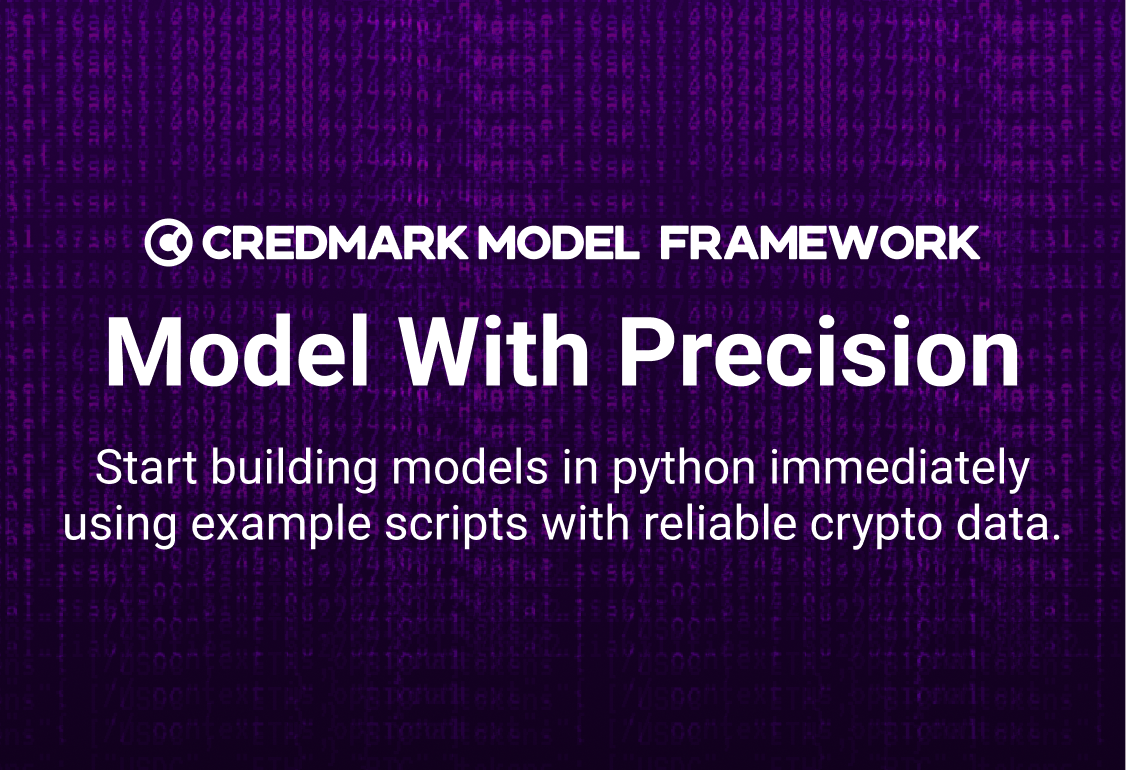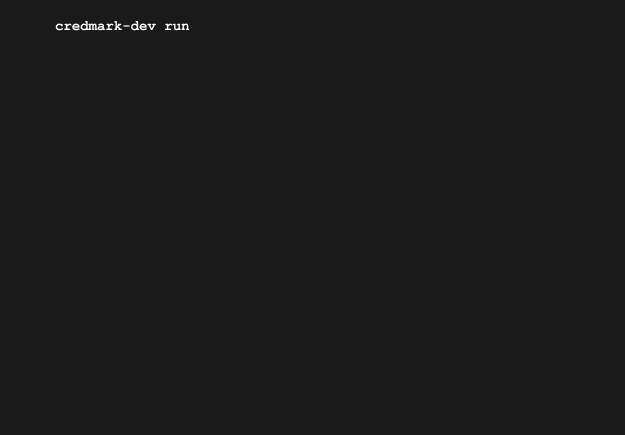Model Framework Open Beta Release
An Introduction
Wen-Chiao Su
2022/03/22

Resources to check-out:
Context
The process of fetching reliable DeFi and crypto data isn’t clear-cut. Say you want to know the historical price of a token, you’ll probably look to centralized services like CoinGecko or decentralized alternatives like SubGraphs or others like Dune Analytics. That’s all fine until the validity of the data is brought into question:
- How would you know when or how the data was collected?
- How would you know the exact block of the transaction?
The truth is, it’s all a black box and the methodology isn’t transparent. Reliable models require reliable data, precise context, and verifiable sources.
This is where the Credmark Model Framework comes in.
Introducing The Credmark Model Framework

With The Credmark Model Framework, users can make use of existing and verified on-chain data, but it abstracts away the complexity of web3 coding.
- Input the block number or the time-stamp to output the transaction data. If there’s no data for the exact time-stamp, it’ll provide the closest data to the input time-stamp and corresponding block number.
- Don’t have the bandwidth to look for all the individual smart contract addresses? Input the smart contract address of the protocol, and it will output all the contract’s ABIs.
It simplifies the coding process, to let modelers do what they do best without compromising transparency and verifiability.
A Credmark Use Case

Initially, the model infrastructure was used as the underlying framework to develop Credmark Terminal.
Earlier last year we released the Terminal, an analytics dashboard that displays historical and live data powered by financial risk models.
It was met with great enthusiasm as users can visualize and immediately assess the health of lending protocols such as Aave & Compound; an example application that was built using our model infrastructure and our data ETL. It served as a primer as we built out our framework and continues to output new metrics as new models are built with the framework.
So What is The Credmark Model Framework?
The Credmark Model Framework is a set of tools that enable developers to rapidly prototype and deploy models that use blockchain data via Credmark’s Ethereum data ETL. In the next few months, we will provide API access to this data.
Rapid Model Development
The Model Framework is designed with modeling best practices in mind. We chose Python for the purpose of rapid model development and flexibility. Financial modelers familiar with the Web3.py library understand the difficulty of building models that need access to large amounts of blockchain data. Our toolkit eliminates much of the complexity thanks to:
- intuitive interfaces to define models, including their input and output data so that they are readily composable,
- model context to ensure deterministic behavior
- a model search engine so that users can find and use local and remote models,
- common data objects such as Address, Contract, Token, Position, Portfolio that encapsulate data and smart behavior.
These are a few examples of the components that we’ve developed to streamline the process. Check out our Documentation and Quickstart Guide to learn more.
Modeling
When you fork our Framework repository in Github, you’ll find scripts and sample models to get you started immediately. We’ve also provided basic algorithmic, protocol, and series models that will make your model building easier. For a complete list, look at the Credmark Model Runner.
When the Framework moves into general availability, model authors will be rewarded for their work. Every time a model is built, the creator will receive an NFT which represents ownership of the model. The NFT holder can hold onto the NFT to receive a payout every time the model is used, or sell it off to a willing purchaser.
Until the model NFT is ready, we suggest modelers include a wallet address in the bio section of GitHub so we can provide the NFT once the system is ready.
So What’s Next
The Model Framework is in open beta. We have a long list of improvements and additions and expect that list to get longer as our community experiments and provides feedback.
Upcoming releases will include:
- API to consume model data
- introduction of Membership NFTs which grants access to the financial modeling and analytics tools
About Credmark
Credmark is a financial modeling platform for DeFi, powered by verifiable on-chain data. It provides the infrastructure necessary to build models. An API allows anyone to consume the output of these models.
Our modeling tools are the most flexible and robust available today. The Credmark Model Framework streamlines prototyping and deployment. Community members are incentivized to build and improve models. As a result, users benefit from verifiable data and best-in-class analyses.
Credmark is a decentralized project. Our community participates in governance, provides research, and develops models. Become a member of Credmark to advance the next-generation financial system.
Sign up for our newsletter for the latest product updates, partnerships, and more.